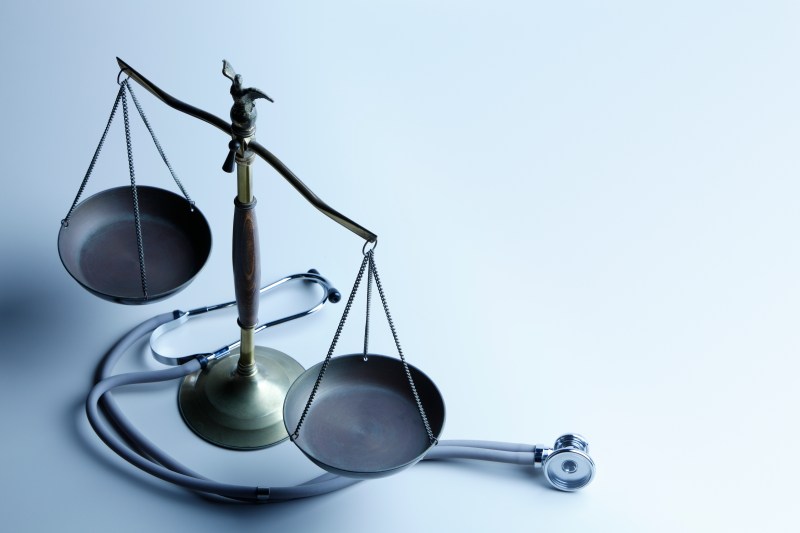
Back in nursing school, you were expected to know the Nursing Code of Ethics backwards and forwards. In fact, you were probably able to recite it by heart at some point. But if you’ve been out of school for a while, some of the details might be a little fuzzy now. In any event, it never hurts to get a refresher on something like the Code. This easy-to-read breakdown will help you re-familiarize yourself with the Nursing Code of Ethics and its key concepts.
Note that this guide only deals with the national Code of Ethics that’s recognized in the United States. If you have the time, you might also want to familiarize yourself with the international code as well.
In 1950, the American Nurses Association (ANA) created the first “Code of Ethics for Nurses with Interpretive Statements,” known commonly as the Nursing Code of Ethics, in order to help nurses successfully navigate a variety of healthcare scenarios. Think of it as a document that formalizes the behaviors expected of nurses. When facing an ethical or moral dilemma, nurses can refer to the Code to guide their on-the-job decision-making processes.
Currently, the Code has nine provisions and 35 interpretive statements that outline how nurses should behave both in and out of the workplace. Given how lengthy it is, we’ve consolidated all of the information you absolutely need to know about it.
First, we’ll highlight the nine provisions that form the structure of the Code of Ethics. Then, we’ll add on each provision’s corresponding interpretive statements, which should help give you a better idea of the ANA’s intent for each of the nine expectations it has of nurses.
If you’re interested in learning more about the Nursing Code of Ethics, or about other ethical issues in nursing, here’s a list of some great publications that you should check out:
Ready to protect yourself? Berxi makes it easy to get the coverage you need with policies designed specifically for nurses. Plus, when you buy direct from Berxi, you can save up to 20% on your premium. Get a quote today — and get yourself peace of mind too.
Image courtesy of iStock.com/DNY59
Last updated on Feb 19, 2025.
Originally published on Jul 02, 2018.
More:
The views expressed in this article are those of the author and do not necessarily reflect those of Berxi™ or Berkshire Hathaway Specialty Insurance Company. This article (subject to change without notice) is for informational purposes only, and does not constitute professional advice. Click here to read our full disclaimer
The product descriptions provided here are only brief summaries and may be changed without notice. The full coverage terms and details, including limitations and exclusions, are contained in the insurance policy. If you have questions about coverage available under our plans, please review the policy or contact us at 833-242-3794 or support@berxi.com. “20% savings” is based on industry pricing averages.
Berxi™ is a part of Berkshire Hathaway Specialty Insurance (BHSI). Insurance products are distributed through Berkshire Hathaway Global Insurance Services, California License # 0K09397. BHSI is part of Berkshire Hathaway’s National Indemnity group of insurance companies, consisting of National Indemnity and its affiliates, which hold financial strength ratings of A++ from AM Best and AA+ from Standard & Poor’s. The rating scales can be found at www.ambest.com and www.standardandpoors.com, respectively.
No warranty, guarantee, or representation, either expressed or implied, is made as to the correctness, accuracy, completeness, adequacy, or sufficiency of any representation or information. Any opinions expressed herein are subject to change without notice.
The information on this web site is not intended or implied to be a substitute for professional medical advice, diagnosis or treatment, and does not purport to establish a standard of care under any circumstances. All content, including text, graphics, images and information, contained on or available through this web site is for general information purposes only based upon the information available at the time of presentation, and does not constitute medical, legal, regulatory, compliance, financial, professional, or any other advice.
BHSI makes no representation and assumes no responsibility or liability for the accuracy of information contained on or available through this web site, and such information is subject to change without notice. You are encouraged to consider and confirm any information obtained from or through this web site with other sources, and review all information regarding any medical condition or treatment with your physician or medical care provider. NEVER DISREGARD PROFESSIONAL MEDICAL ADVICE OR DELAY SEEKING MEDICAL TREATMENT BECAUSE OF SOMETHING THAT YOU HAVE READ ON OR ACCESSED THROUGH THIS WEB SITE.
BHSI is not a medical organization, and does not recommend, endorse or make any representation about the efficacy, appropriateness or suitability of any specific tests, products, procedures, treatments, services, opinions, health care providers or other information contained on or available through this web site. BHSI IS NOT RESPONSIBLE FOR, AND EXPRESSLY DISCLAIMS ALL LIABILITY FOR, ANY ADVICE, COURSE OF TREATMENT, DIAGNOSIS OR ANY OTHER SERVICES OR PRODUCTS THAT YOU OBTAIN AFTER REVIEWING THIS WEB SITE.
Click to collapse disclamerWant Berxi articles delivered straight to your inbox? Sign up for our monthly newsletter below!
"*" indicates required fields